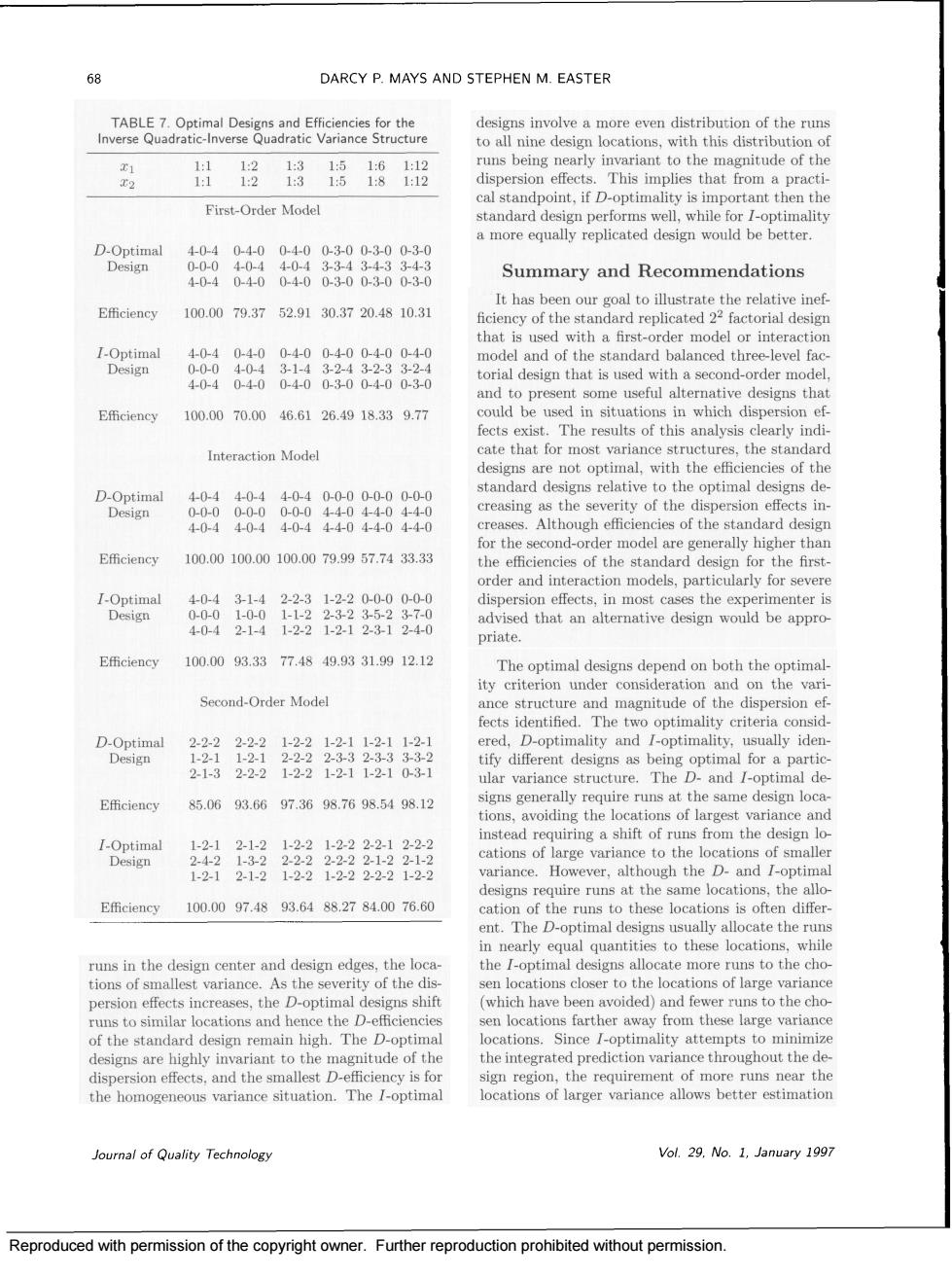正在加载图片...

68 DARCY P.MAYS AND STEPHEN M.EASTER designs involve a more even distribution of the runs o all nine design locations,with this distribution of First-Order Model Summary and Recommendations Efficiency 100.0079.3752.9130.3720.4810.31 that is used with a first-order model or interaction -9e andofthestandard balanced three-level fa 0400400-30040030 and to present some useful alternative designs that Efficiency100.0070.0046.6126.4918.339.77 could be used in situations in which dispersion ef Interaction Model lesigns are not optimal,with the efficiencies of the Dpal tandard designs relative to the optimal de for the second-order model are generally higher than Efficiency 10.00100.0010.0079.957.7433.3 ncies of the standard d tor the firs advised that an alternative design would be appro- priate E用ciency100.0093.3377.4849.9331.9912.12 mal designs de end on both the optima Second-Order Model the dispersion ntimalit 232221221211-2-103 tify different designs as being optimal for a partic ar variance structure. Ihe D.and Efficiency 85.0693.6697.3698.7698.5498.12 the locations of largest instead requiring a shift of runs from the design lo- LOptimal ationsof t designs require runs at the same locations,the allo Efficiency 100.0097.4893.6488.2784.0076.60 cation of the runs t these location s is often differ e locations while runs in the design center and design edges,the loca the I-optimal designs allocate more runs to the cho tionsofne variance. ons closer to unsto locations nd heuce the D-eficlenci locations farther away from these large varianc of the standard design remain high.The D-optima ocations.Since T-optimality attempts to minimiz iesigsarehievarianttotepanitdeq s fo of m o runs near the the homogeneous variance situation.The /-optimal locations of larger variance allows better estimation Vol.29.No.1.January 1997 Reproduced with permission of the copyright owner.Further reproduction prohibited without permission. Reproduced with permission of the copyright owner. Further reproduction prohibited without permission